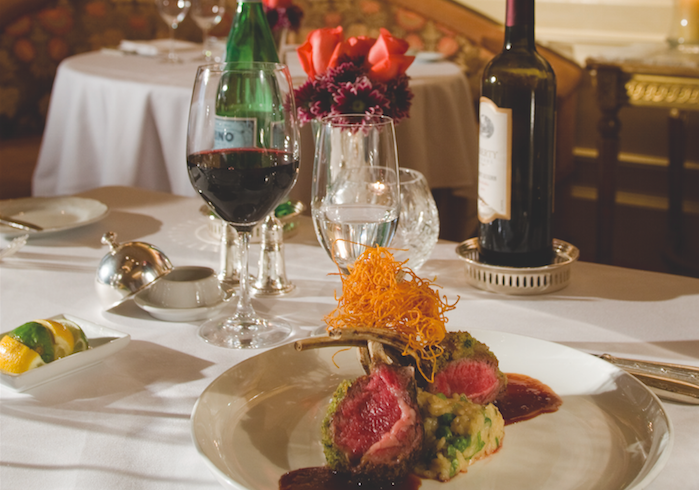Editor’s Note: As most beverage trends begin on-premise, we occasionally crosspost content like this from Cheers, our sister publication covering bars and restaurants.
Merlot may be one of the most widely planted classic red varietals used in regions around the world, but like chardonnay, it has gone through an unfashionable phase in recent years. That has changed, though, and merlot is key in building or updating a wine list.
French versions offer fabulous minerality, freshness and subtle fruit, while those from California provide ripe lushness. Merlot from other pockets around the globe combine the best of both, all while adding some spice and not-too- over-the-top structure.
“In the right hands, merlot can really be a star at the table,” says Matt Whitney, wine director for Eastern Standard, a 125-seat neighborhood brasserie in Boston that serves French-inspired fare. “The wines are complex and have enough body and fruit to stand up to a variety of dishes yet won’t overpower them.”
A few great merlot matches on Eastern Standard’s menu include the smoked pork-blade steak, roasted half chicken and even a simple burger.
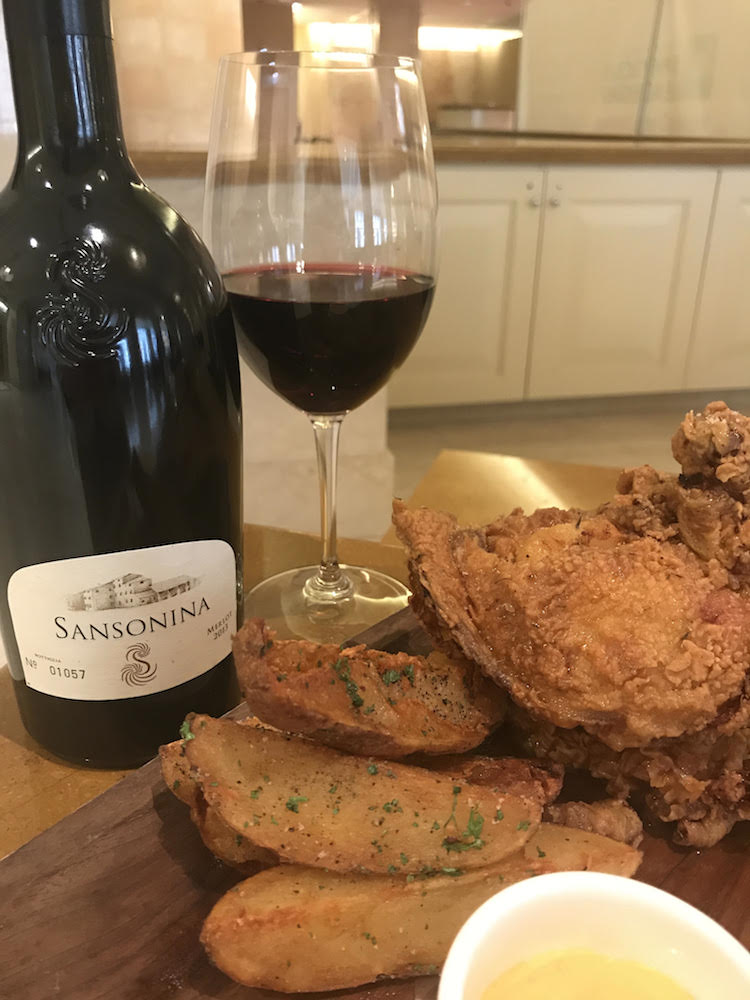
Old World Delights
Eastern Standard offers several merlots by the glass and bottle on its 165-bottle wine list. The 2014 Donna Olimpia ($15 a glass) is a merlot blend from Tuscany, and the 2000 Château Gombaude-Guillot ($275 a magnum) comes from the Bordeaux sub-appellation of Pomerol.
Whitney says some of the best merlots he’s tried recently hail from Bordeaux—the traditional region for both that varietal and cabernet sauvignon—but not just from those famed regions of Pomerol and St. Emilion. “Yes, those are great, but you can also find some great value in the surrounding regions like the Côtes du Francs, including the 2012 Château Le Puy ($78 a bottle) from the Côtes de Francs,” he notes.
These Old World styles of merlot from France tend to be more restrained than their counterparts in warmer regions including California and Chile, Whitney says. This translates to minerality and subtlety rather than over-the-top jammy fruit, and an ability to deftly pair without overshadowing dishes.
The Grill Room at the 316-room Windsor Court Hotel in New Orleans maintains a list of 28 wines by the glass and 700 by the bottle. Of those, one merlot is offered by the glass at $13, and dozens available by the bottle, ranging in price from $60 to $2,999.
The 100-seat, Southern-cuisine-focused restaurant’s list is focused mainly on Old World wines, such as the 2014 Scarbolo merlot ($13 a glass, $60 a bottle), from Italy’s Friuli region. Director of food and beverage Joey Worley describes the wine as earthy and lighter-bodied, with mild acidity that makes it easy to drink with or without food.
If you do opt to pair it with a meal, he notes, the merlot goes perfectly with lamb rack with morels, English peas, house-made lamb bacon, braised lettuce, pearl onion petals and saffron potatoes (pictured atop).
Also Old World but decidedly on the spendier side is the 2001 Château Petrus ($2,999) from the venerable Bordeaux producer. The wine is blended with a small amount of cabernet franc and boasts “earthy hints of limestone and clay, a vegetal quality and higher tannic notes than New World counterparts.” It’s a good match with The Grill Room’s 72-hour-braised short rib served with potatoes bravas, carrots and soubise sauce, Worley says.
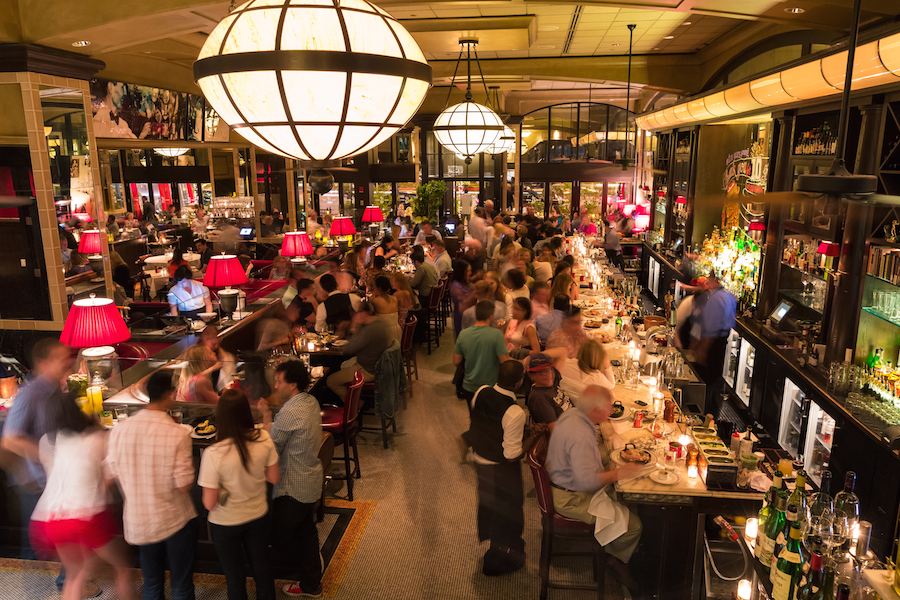
Super Italians
The Florentine, a 180-seat restaurant in the JW Marriott Chicago, offers an elegant yet accessible interpretation of seasonal Italian cuisine, with a wine of 220 bottles and a rotating roster of 20 options by the glass. “Merlot is balanced, it’s great with or without food and can please a wide range of palates because it’s not too light or tannic,” says wine director Alexandria Sarovich.
Merlot-based Super Tuscans—which can also be blended with sangiovese, cabernet sauvignon and other grapes—are a great choice, as the cooler climate of that Italian region brings power and finesse, she says.
The Florentine offers the 2015 Le Volte dell’Ornellaia for $27 a glass and $79 for a bottle. It also carries more than 10 other merlot-blend Super Tuscans by the bottle, ranging in price from $75 to $300.
“We have a lot more guests asking for [merlot] on a daily basis,” Sarovich says. “Also, within my blind-tasting group there are several occasions where merlot has been confused for cabernet sauvignon.”
Indeed, depending on the climate, terroir and cellar techniques, the aroma, mouthfeel, flavor and finish of both grapes may be similar. That’s one of the reasons they make such synergistic blending partners.
The Florentine does offer varietally bottled merlots, too. The 2013 Sansonina merlot ($79 a bottle) is considered a Super Veneto, from a region with a warm climate that assures proper ripening of the grapes, without the heat of Napa Valley.
“You’ll find fresh black fruit notes with silky yet structured tannins, and a dried herbal undertone,” Sarovich says of the Sansonina. She recommends it with The Florentine’s conchiglioni dish, a large-shell pasta with house-made, sweet fennel sausage, pesto and cherry tomato sauce and braised kale.
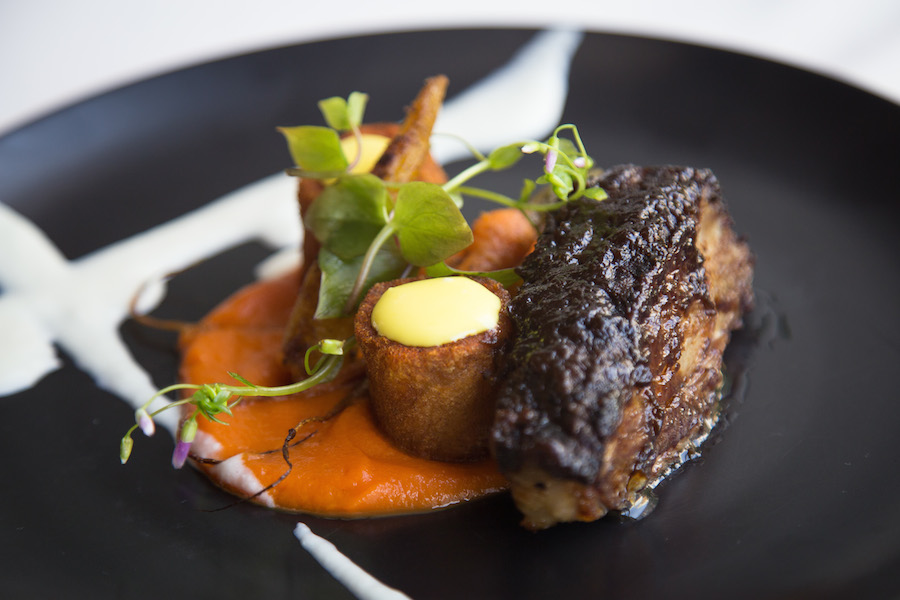
California Dreaming
Of course, Napa Valley is home to many wineries that produce merlot. Sarovich is partial to the ripe, balanced and complex 2014 Acre merlot ($82 a bottle), made at a family-owned/ operated organic winery in the Oakville AVA. General oak aging gives the wine cinnamon and spice notes and great tannic structure.
Sarovich likes the Acre merlot with the pork osso bucco, which is braised for hours, then pan-seared to crisp up the exterior, and served with a smoky and lightly spiced harissa chili sauce. “The spice notes in the wine are brought out further when paired up with the harissa sauce,” she points out. “Also, the fruit notes in the wine add another layer of sweetness and brightness to the dish.”
And one of Sarovich’s absolute favorite pairings for merlot is the pollo fried chicken, which is marinated in milk, rosemary and thyme and fried to order. “The rosemary plays nicely with the herbaceous elements in the merlot and the bright acidity cuts right through the richness of the dish.”
Merlot generally has lower tannin levels than cabernet sauvignon. That means the wine can hold its own next to a variety of cuisines, from seafood to poultry to meat, without that drying astringency that can be off-putting next to the wrong ingredients.
The Grill Room’s Worley cites Swanson Vineyards as one of his favorite wineries; he believes it is producing some of the best merlot in California—along with Shafer and Ridge. The 2013 Swanson merlot ($100 a bottle) is “complex, jammy, [with] notes of blackberry and raspberry,” a match for the Wagyu beef filet.
Proof, a 100-seat, wine-centric Modern American restaurant in Washington, D.C., has a 1,000-bottle wine list, and 45 options by the glass. It offers about 50 varietally labeled merlots by the bottle, and the 2010 Lussac-Saint-Emilion for $15 a glass.
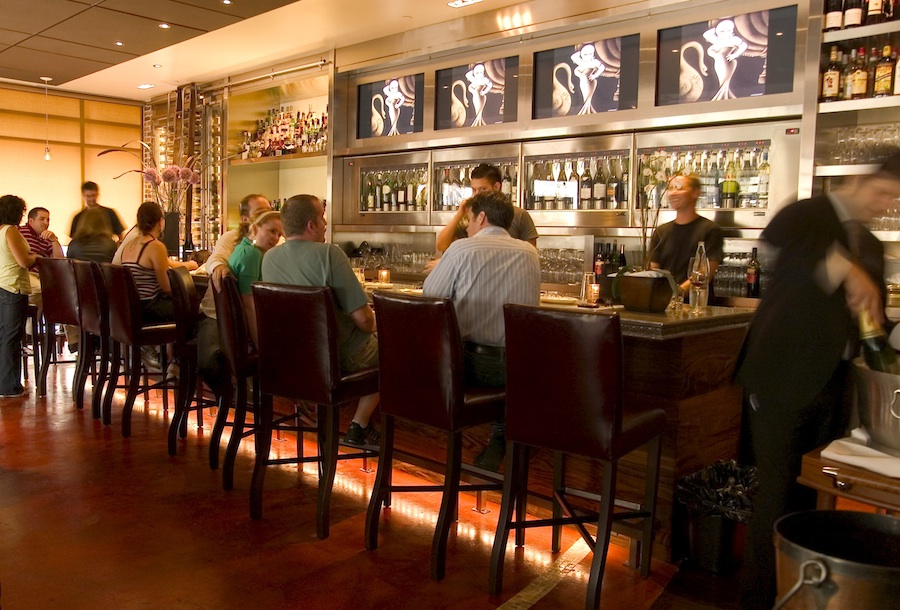
Sommelier Ben Kuna notes that the newcomer to merlot might be seeking more acid-driven, bright, herbal examples than overtly oaky ones from Napa. But when most guests taste the 2013 Peter Franus merlot ($78 a bottle) from Napa, they generally like it, he says.
Kuna’s other Napa picks include the 2013 Keenan merlot ($92 a bottle) from the Spring Mountain District, and the 2013 Hudson merlot ($135 a bottle) from the Carneros AVA.
One of his favorite merlots of all time—admittedly on the high end of the price spectrum—is the Ridge Vineyards Monte Bello Estate merlot from the Santa Cruz Mountains. Proof carries the 2003 vintage for $500 a bottle. A bit more approachable is the 2012 Ridge Vineyards Estate merlot for $130 a bottle.

Merlots Round the World
Wine directors are seeing some stellar merlot popping up in other pockets, including Australia, South Africa and Virginia. One example from Kuna is the 2013 Rendezvous from RDV Vineyards in Delaplane, VA. Priced at $150 a bottle, it’s a heavily merlot-based, Bordeaux-style blend “that would make you think you’re drinking the real thing,” he says.
Washington State is making some great merlot wines that balance Old World restraint with New World fruit, Kuna says, citing the 2012 Basel Cellars Merriment ($95 a bottle) from Walla Walla.
And South African producers are crafting fabulous New-World-style merlots. “The 2012 Remhoogte ‘Sir Thomas Cullinan’ [from Stellenbosch], which is about 75% merlot, is so satisfying with our dry-aged tomahawk Shenandoah beef ribeye with peppercorn Cognac sauce,” he adds.
Whitney also points to the North Fork of Long Island as a trending—not to mention wallet-friendly—region for the grape, represented by producers including Channing Daughters and Bedell Cellars. The sandy soils and cooling breezes means the resulting wines also have an enticing line of minerality, along with fruit flavors of plum and a touch of spice.
“I think there are a lot of really, really bad examples of merlot out there, a.k.a. jugs found on most liquor store shelves,” Whitney admits. “My advice is to not let the mass-production bottles give merlot a bad name.”
Going Sideways
Of course, no mention of merlot being unfairly eschewed or misperceived is complete without pointing the finger at Sideways, the 2004 film that considerably squashed its popularity.
“It became a red-headed stepchild compared to sexy and sophisticated pinot noir and better-known, venerated Bordeaux varietals like cabernet sauvignon,” points out Worley. “But the average consumer of wine has become more savvy, and with the help of wine-oriented smartphone apps…understands that merlot is a dynamic varietal that is every bit as enjoyable as others.”
Diners are becoming more interested in how vinification methods coax out, say, licorice notes in the grape, says Kuna. “The guest that has always enjoyed merlot may order it now without looking over their shoulder.”
On the flip side, those consumers who have previously had a “no merlot” policy are now all too happy to hear how those from Bordeaux in particular can go with Wagyu hangar steak with onion soubise, bacon, Swiss chard and cippolini onions.
“It’s exciting to see a varietal that has taken a lot of flak being so openly explored and accepted, [and] not everyone is immediately expecting a high-alcohol jam loaded with tons of vanilla and chocolate,” Kuna says.
The biggest question about merlot, Kuna says, is just what constitutes it exactly. Is it a proprietary name, varietally bottled, highly oaked wine from Napa Valley? A versatile grape used around the world in large and small amounts? A predominantly merlot-based bottle from a little region in Dordogne?
The answer is yes to all. “It’s both classic and modern, Old World and New World, opulent and restrained, obtuse and precise, and the perception of what it is falls anywhere and everything in-between,” Kuna says.
Kelly Magyarics, DWS, is a wine, spirits and lifestyle writer and wine educator in the Washington, D.C. area.

